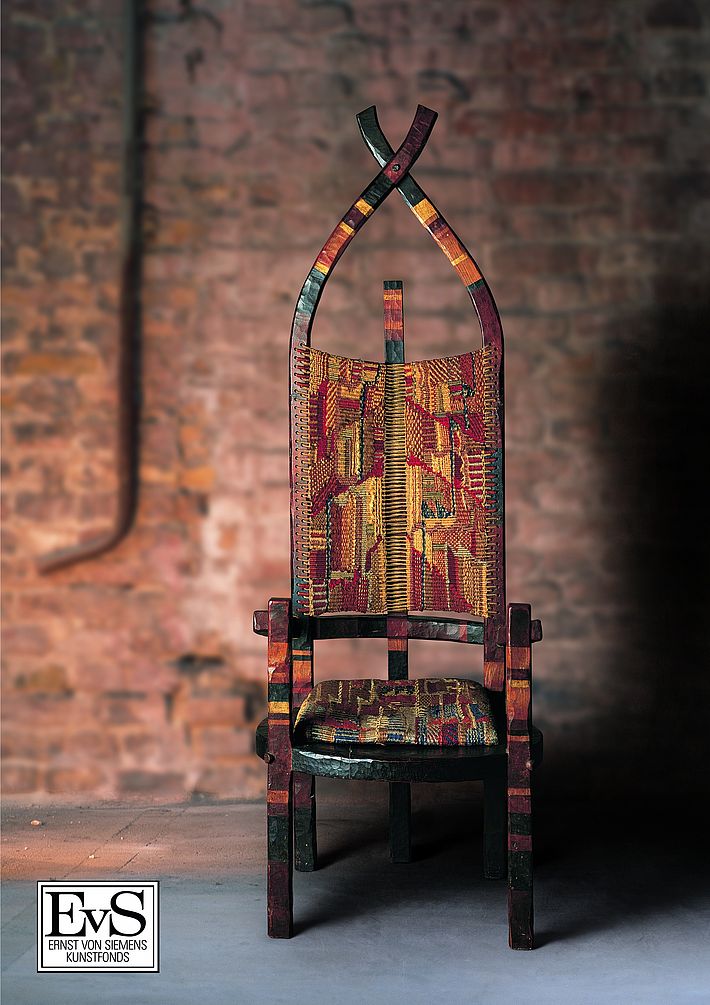African Chair
Marcel Breuer and Gunta Stölzl, 1921
The “African Chair” is a work dating from the early expressionistic phase of the Bauhaus and a collaborative effort of the two Bauhauslers Marcel Breuer and Gunta Stölzl. Their collaborative project of 1921 was first given the name “African Chair” by Breuer many years later.

[Translate to English:] Text
The emergence of the "African chair" dates back to the early years of Bauhausler Marcel Breuer and Gunta Stölzl: Breuer had transferred to the Bauhaus Weimar from the Academy of Fine Arts Vienna just one year earlier. At the Bauhaus he trained in the wood workshop, then headed by Johannes Itten. Gunta Stölzl had already transferred from Munich’s Kunstgewerbeschule (School of Applied Arts) to the Bauhaus Weimar in 1919, its founding year, and trained there in the weaving workshop.
The five-legged “throne-like” frame of oak wood clearly shows traces of having been worked by hand. The uprights of the backrest are dotted with holes and serve as a framework for Gunta Stölzl’s weaving. Between the uprights she spans warp threads, around which, using the Gobelin technique, a colourful abstract pattern emerges. The expressive colourfulness of the woven backrest and seat pad is found again on the wooden frame. The still-visible warp threads, the obvious traces of workmanship on the wooden elements, and the painting on these, are reminiscent of works of folk art.
The “African Chair” first appears in print in the first issue of the magazine “bauhaus”, published in 1926. In it, a “film strip” shows the evolution of Breuer’s chair designs – from the “African Chair” and the De Stijl-inspired “Slatted Chair” (1924) to the tubular steel armchair (1925). As a visionary insight into the future, this “film strip” ends with a picture of a woman taking a seat on a “springy column of air”.
The “African Chair” was presumed lost for many years and was first rediscovered in 2004. Today, it is part of the collection of the Bauhaus-Archiv / Museum für Gestaltung, Berlin.
- Literature:
- Wolsdorff, Christian (2004): Der „Afrikanische Stuhl" - ein Schlüsselwerk des frühen Bauhauses. In: Museums Journal 3/2004, Berlin.
- Bergdoll, Barry/Dickerman, Leah (2009): Bauhaus 1919–1933. Workshops for Modernity, New York.
- Siebenbrodt, Michael (2000): Bauhaus Weimar. Entwürfe für die Zukunft, Ostfildern-Ruit.
- Stiftung Bauhaus Dessau (1997): Gunta Stölzl. Meisterin am Bauhaus Dessau. Textilien, Textilentwürfe und freie Arbeiten 1915–1983, Ostfildern-Ruit.